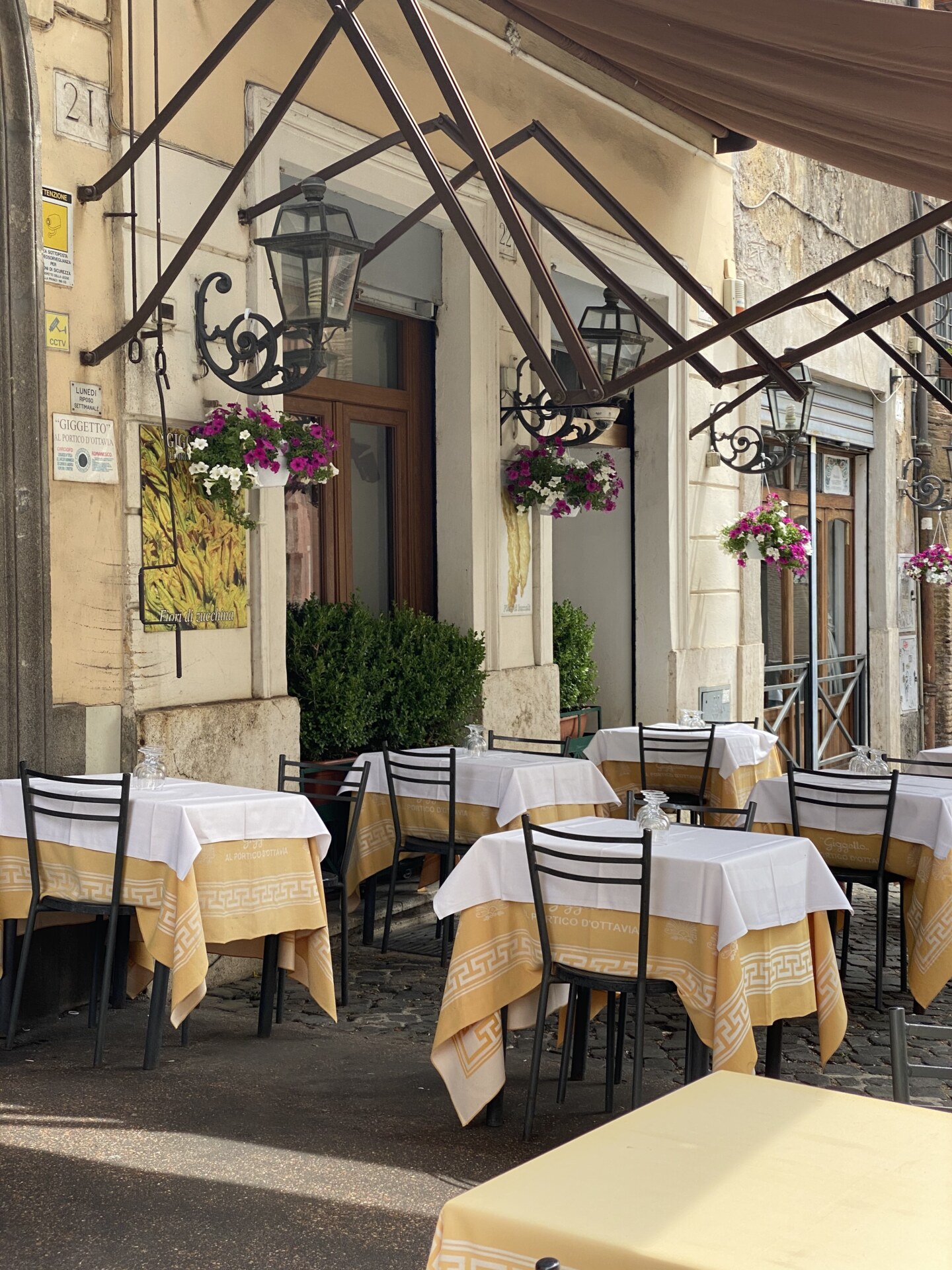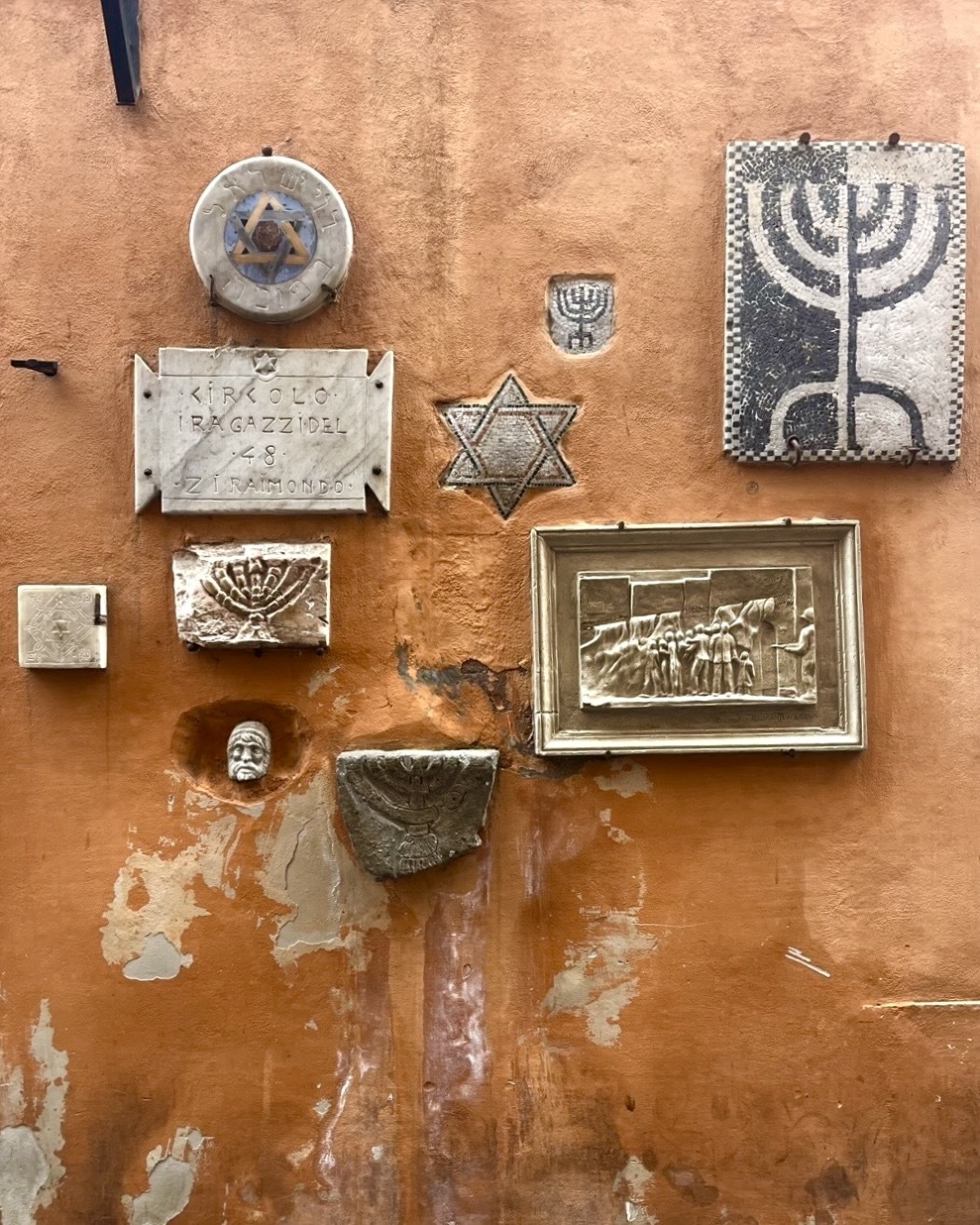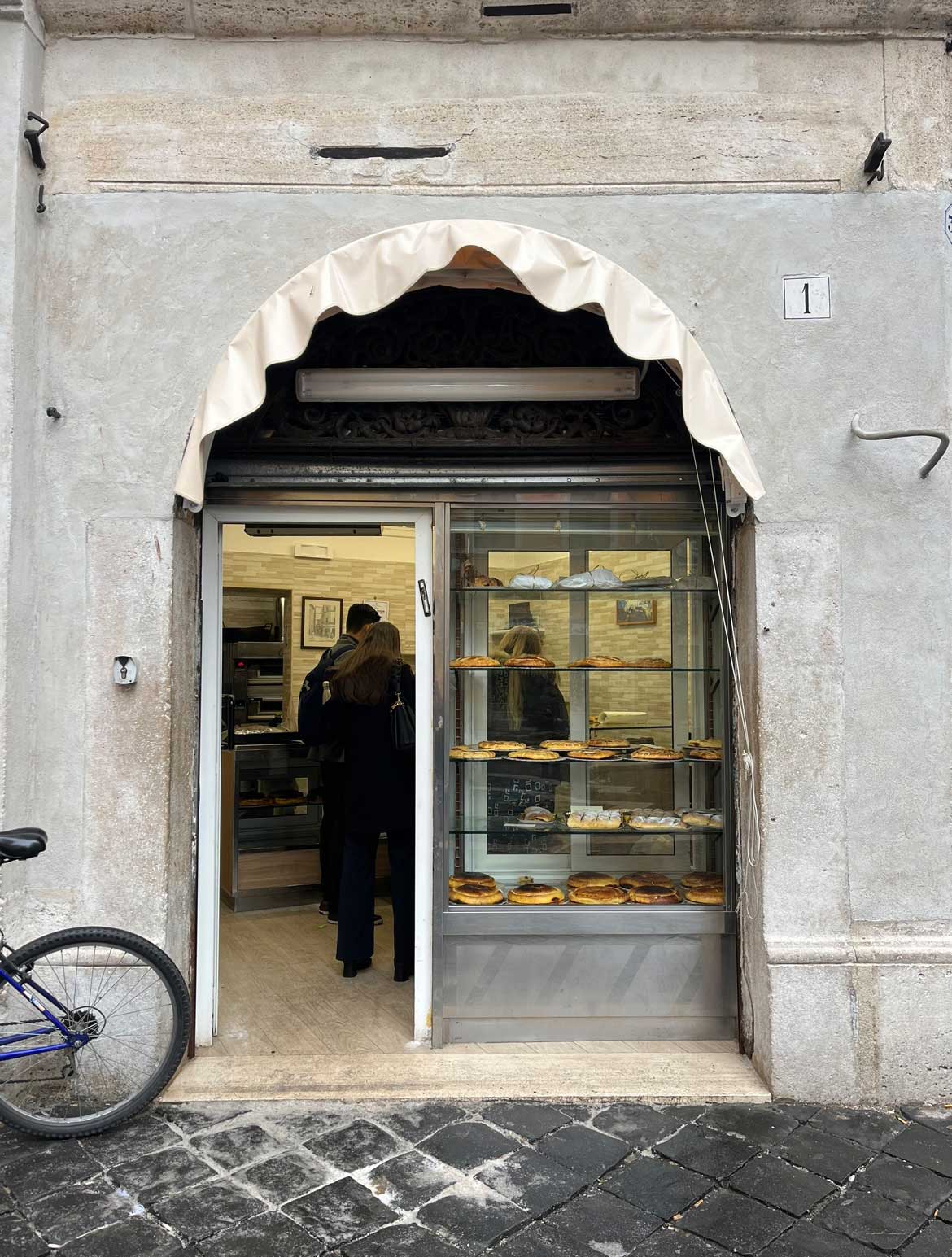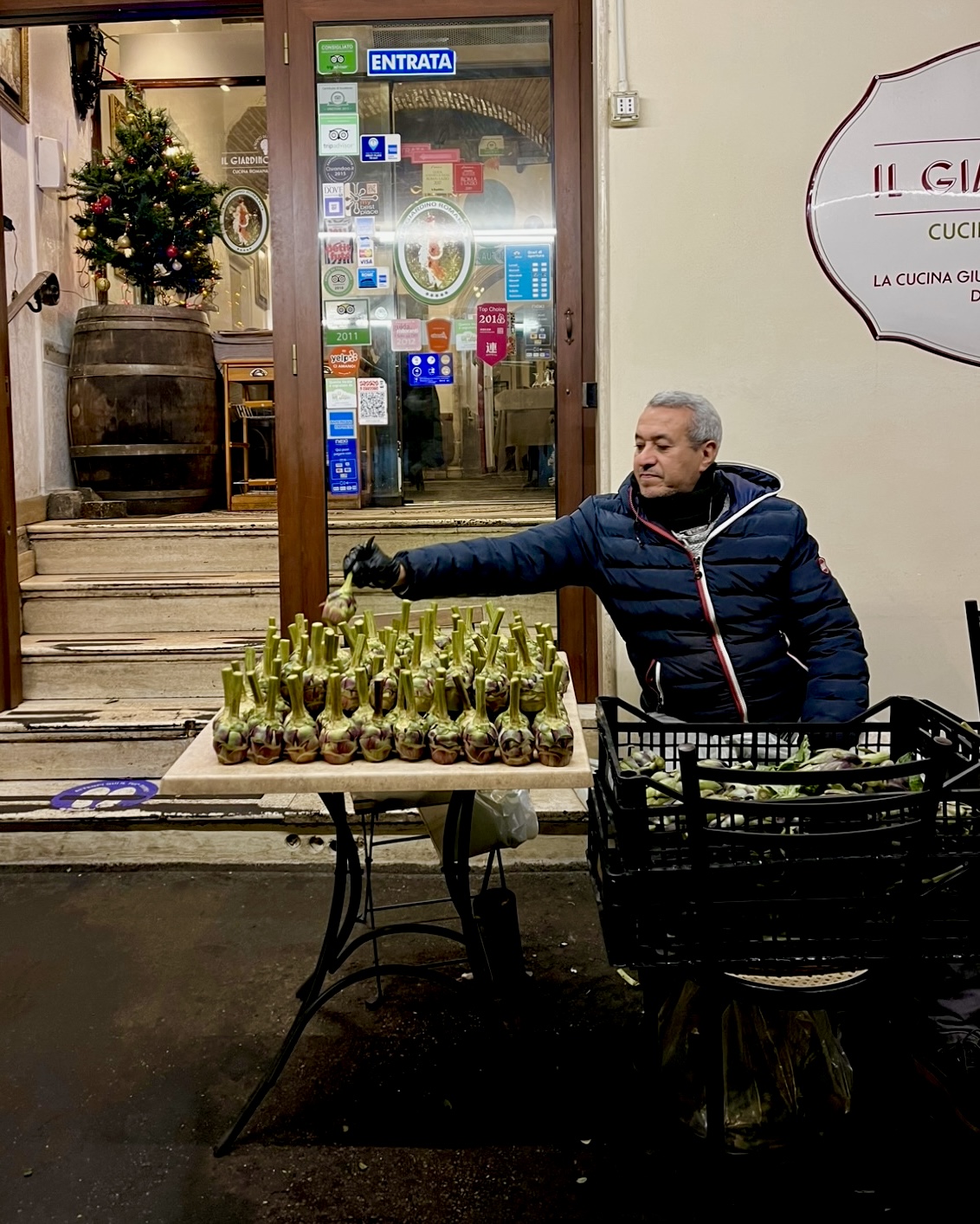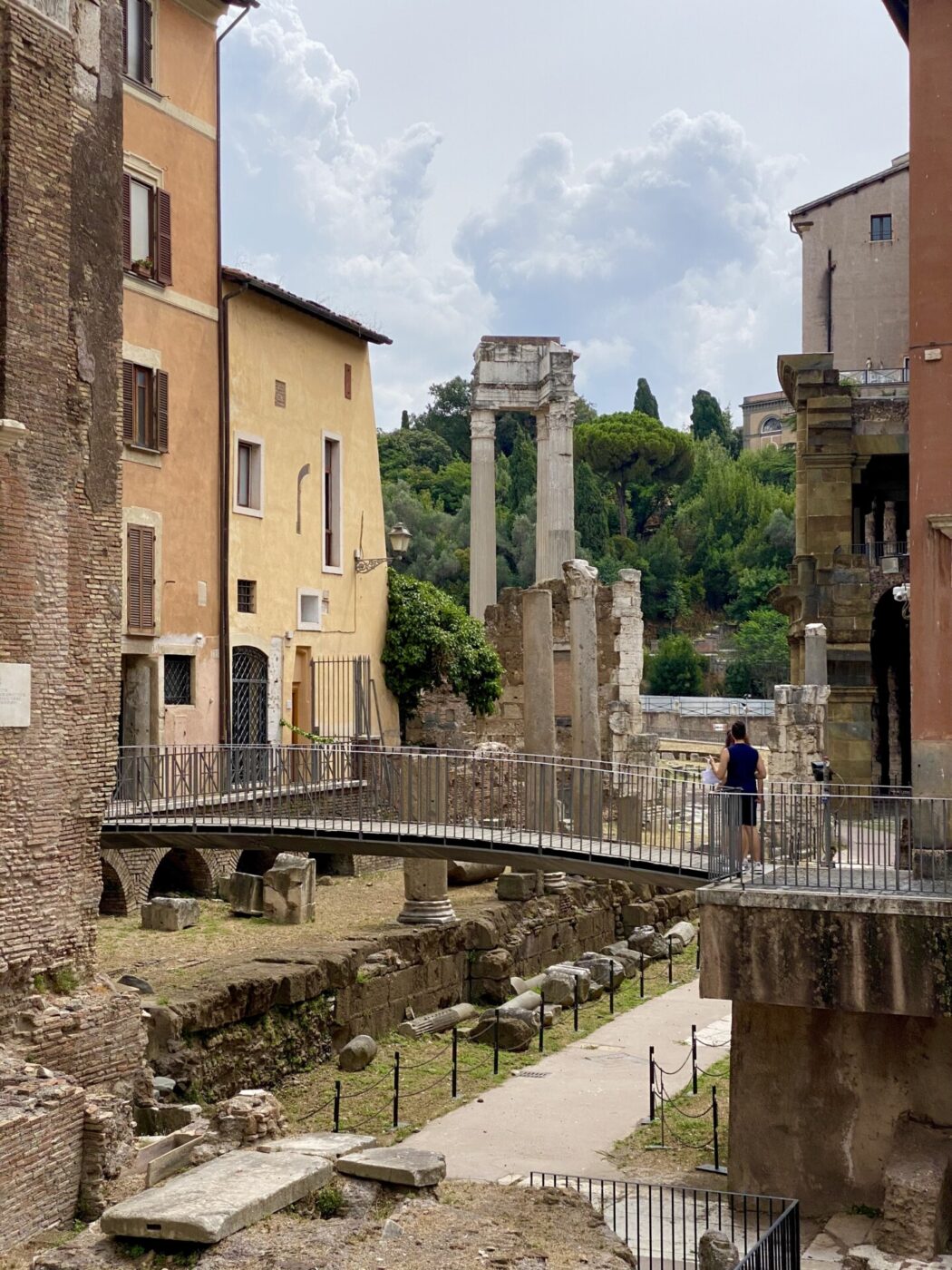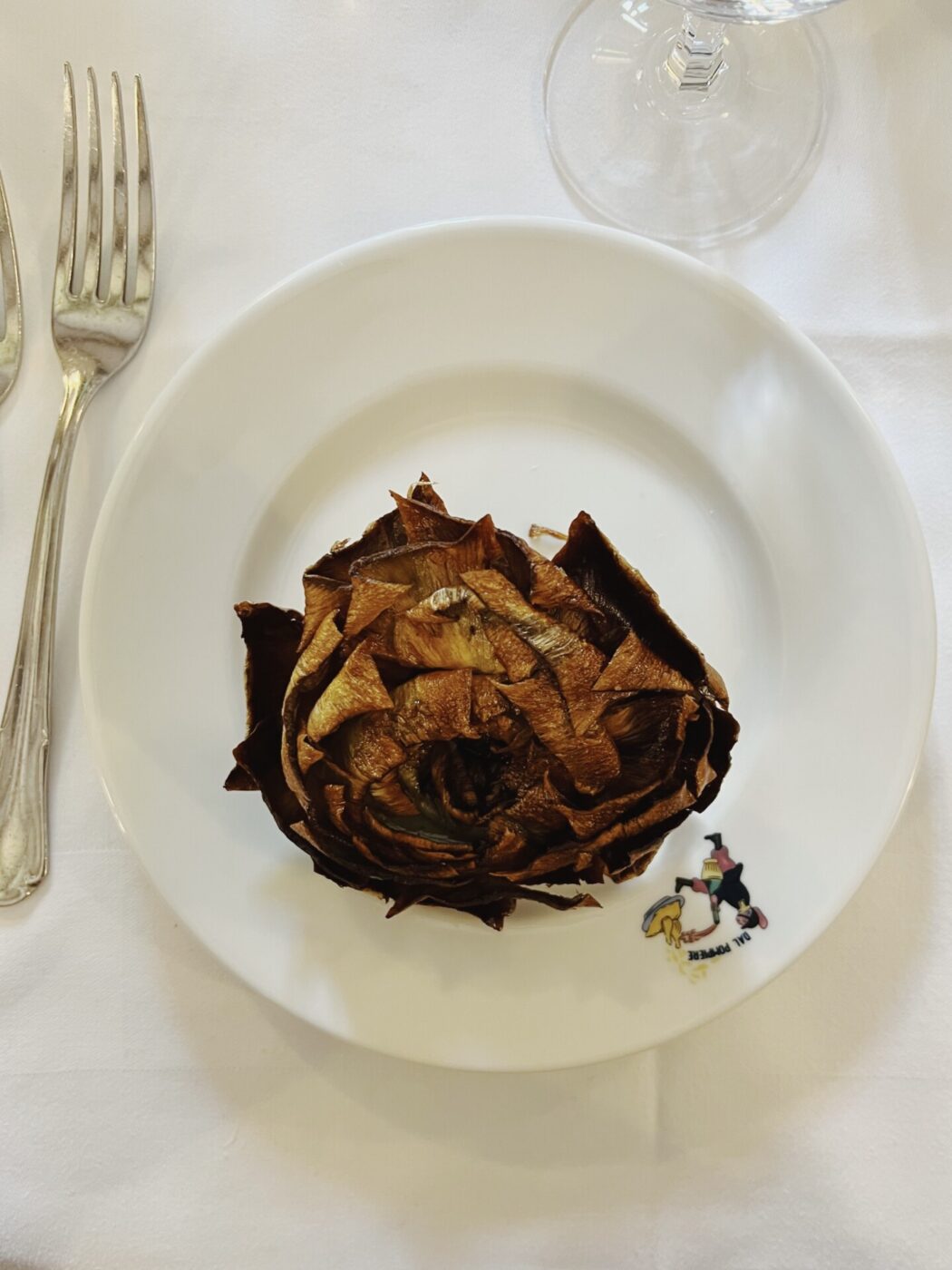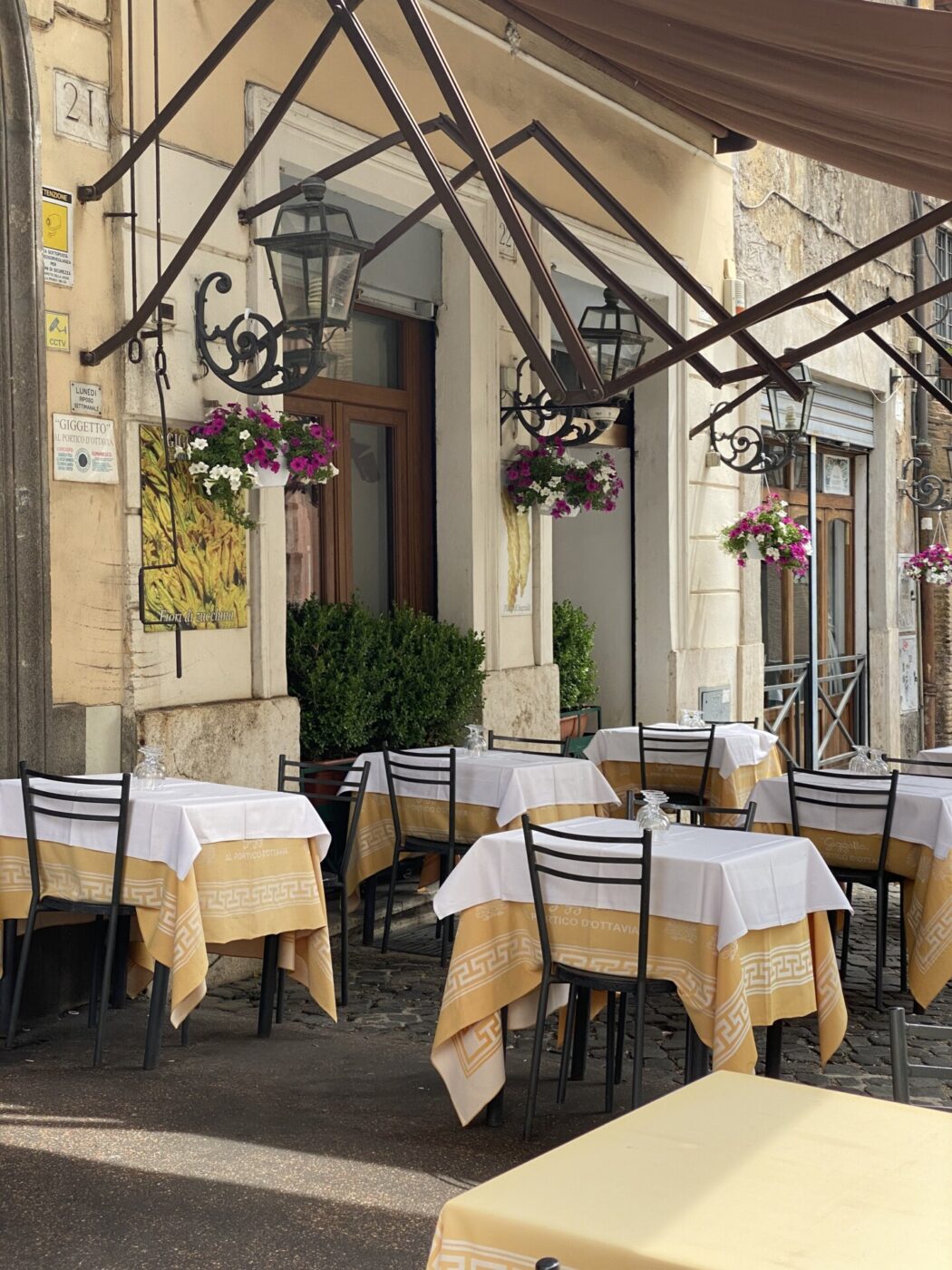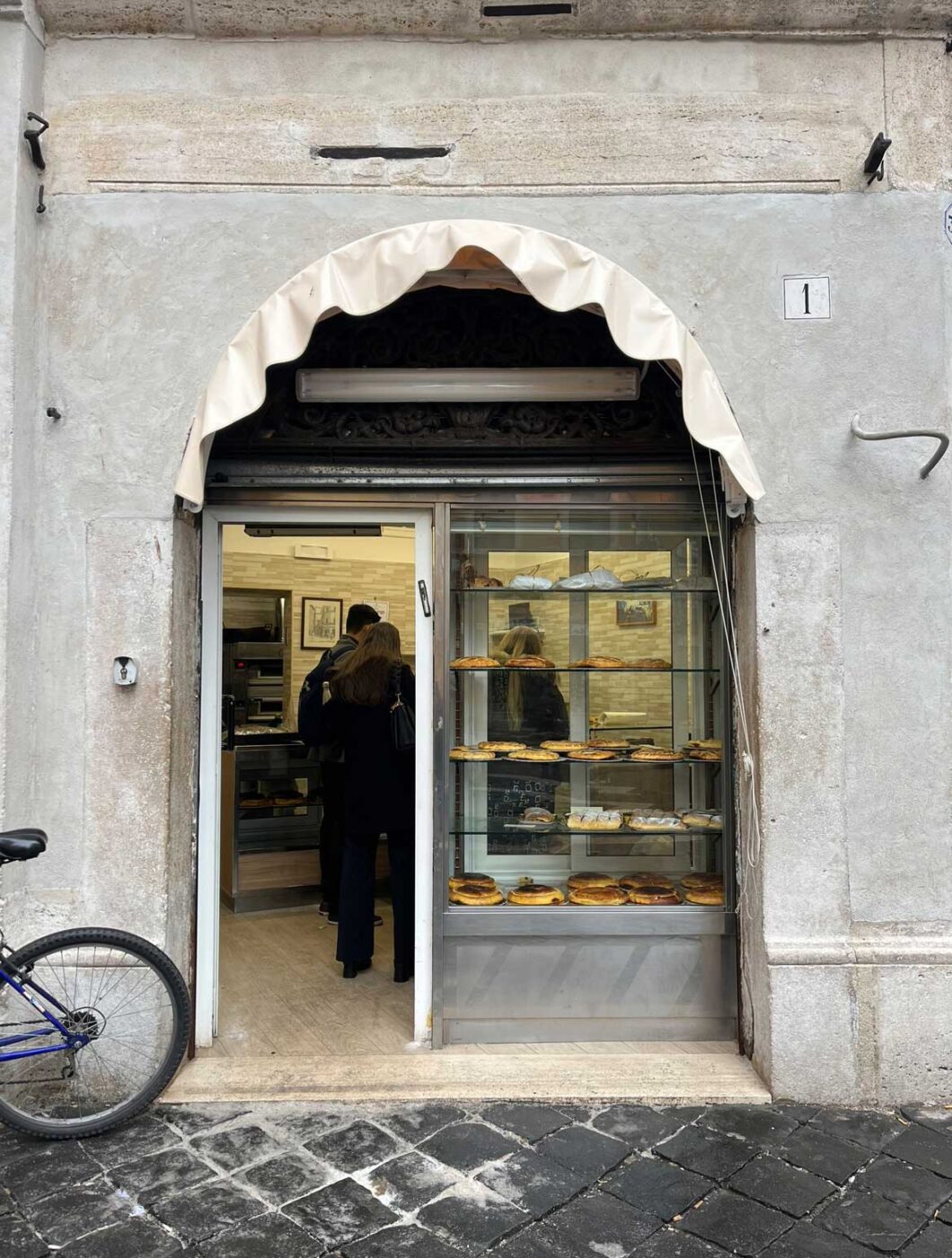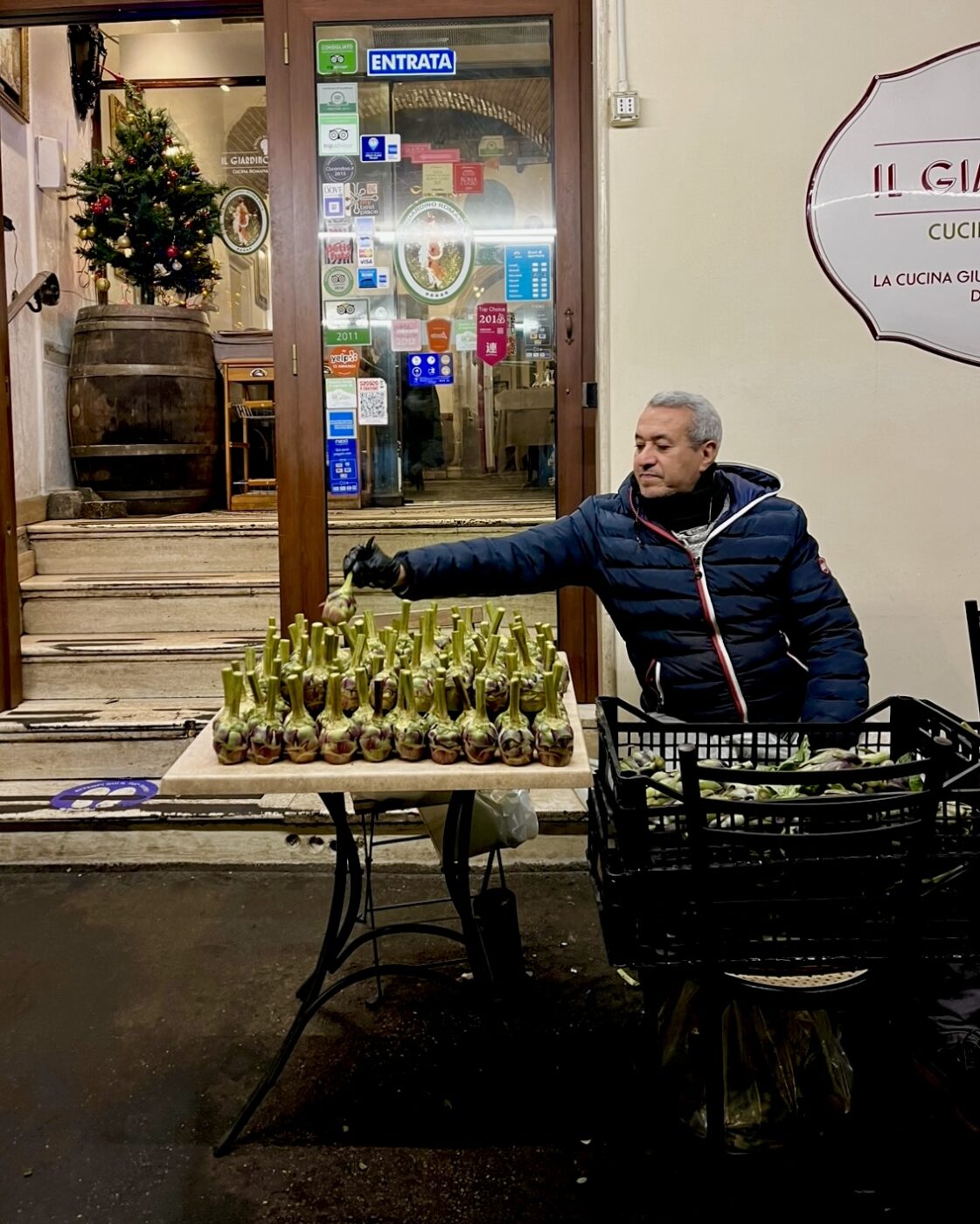In Rome on the corner between Piazza Costaguti and Via del Portico d’Ottavia is a bakery without a sign. Unremarkable in appearance, it’s easy to miss. Lined up in the window are the morning’s bakes: five rows of pastries, some missing a label, others cracked and burnt. And yet, from dawn to dusk, a steady queue files along the cobbled street through the bakery’s open door.
This is Pasticceria Boccione, the Jewish Quarter’s oldest surviving bakery. As I order a slice of their famous ricotta and wild cherry tart, the women behind the counter tell me with a shrug, “We’ve been here for many, many years.” I look it up later; 207, to be exact, and the recipe they use to make the tart is thought to date back 2,000 years, its origin emerging with the arrival of the Jewish community in Rome.
The tart is delicious: crumbly pastry and cloud-like ricotta cut through with tangy cherry. Yael, a worker at the nearby Jewish Museum of Rome, explains that the dessert, found on every menu in the Jewish Quarter, is emblematic of the community’s resourcefulness. The story goes that in the 18th century, a papal decree banned the Jewish people from selling cheese and dairy products—one of a long line of restrictions imposed by the Vatican, which also forbade Jews from owning property or working in almost any professional trade. After the decree was passed, the top of the tart was covered with a layer of dough, hiding its ricotta interior, so that it could be sold without suspicion.
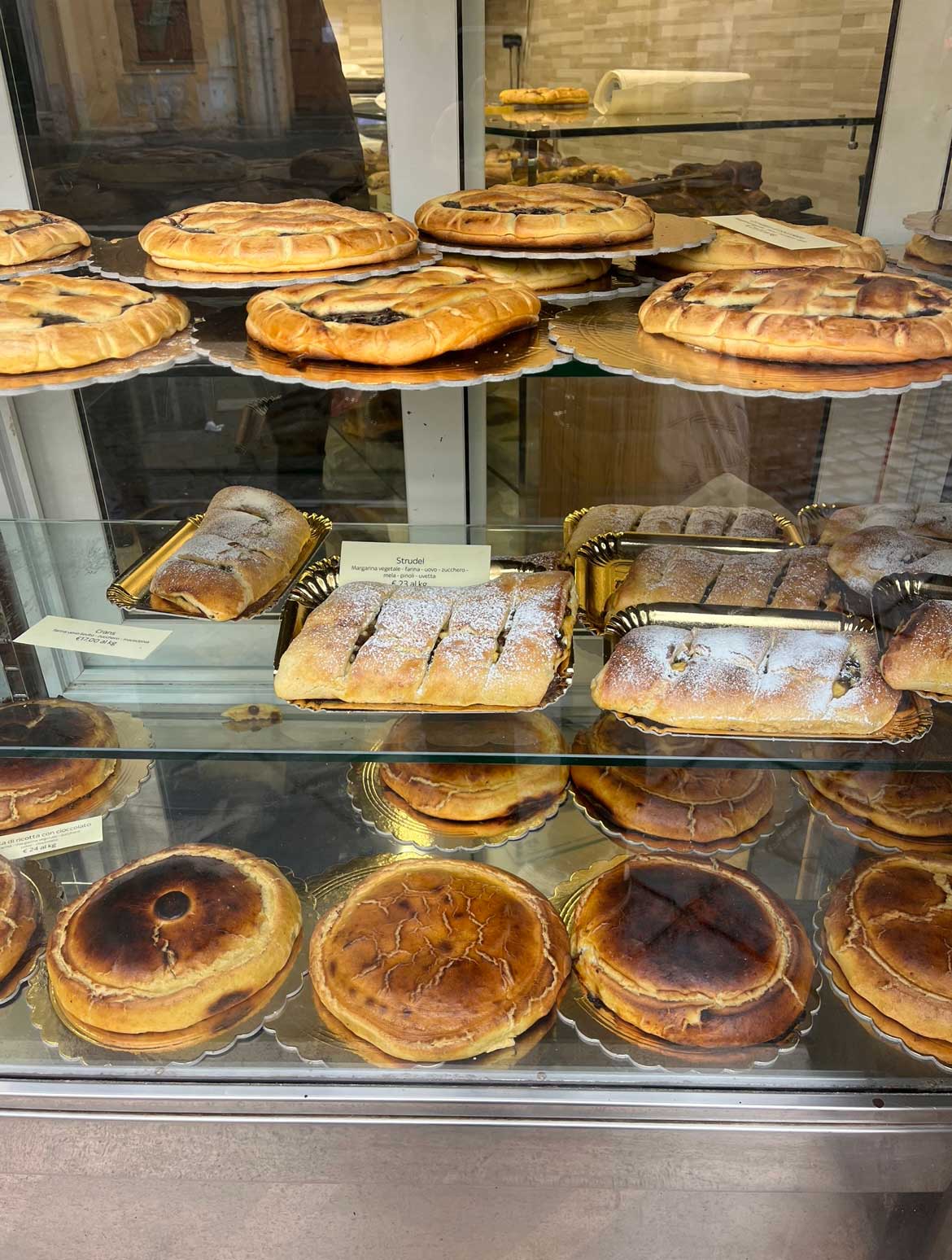
Pasticceria Boccione
Resistance in the face of hardship runs deep in the history of Rome’s Jewish community, which is the oldest in Europe. The earliest Jews arrived in Rome in the second century BC as envoys of Judah Maccabee, seeking protection from the religious persecution of Syrian king Antiochus. Two centuries later, Rome invaded Judea, and thousands of Jewish prisoners of war were brought back as slaves, soon awarded freedom after their ransoms were paid by the existing Jewish community. The number of Jews in Rome slowly grew, and the community settled across the Tiber river in the aptly named Trastevere neighborhood.
This relatively peaceful co-existence was not to last. The fall of the Roman empire and the rise of Christianity led to increased antisemitism, and, in 1555, Pope Paul IV created the Roman Ghetto, the name originating from the Venetian Ghetto established 40 years prior. The Jewish population was moved to a walled, gated district subject to frequent flooding. With no space to build more housing to accommodate the growing population, the ghetto’s buildings expanded upwards—the making of the dark, narrow streets that honeycomb the Jewish Quarter to this day.
Unable to enter and exit the ghetto at night and having to don yellow garments when venturing out during the day (a “shameful” color also worn by prostitutes), the Roman Jews were confined within the gated walls for more than 300 years. Their almost total isolation fostered a distinct Roman-Jewish culture, and despite restricted access to produce, a rich culinary tradition was born: a blend of Roman flavors, Jewish dietary laws, and inventiveness in the face of poverty.
Perhaps most famous are the carciofi alla giudia, or Jewish-style artichokes, unequivocal staples of the Judeo-Roman food scene. Not to be confused with carciofi alla romana, or Roman-style artichokes (stuffed with fresh herbs and garlic then sautéed in white wine and olive oil), Jewish artichokes are deep-fried and served golden-brown and crispy. If you go to the Jewish Quarter in spring, you’ll find neighborhood nonni seated along Via del Portico d’Ottavia, deftly stripping away the vegetable’s tough outer leaves to reveal the blotched violet globe beneath.

Every restaurant in the area serves the specialty and jostles for first place; lunchtime here is a panorama of beckoning waiters and tumbling displays of artichokes. Anthony Bourdain famously awarded his stamp of approval to restaurant Nonna Betta, declaring that “life is too short to get the wrong giudia artichoke”—a slogan now proudly plastered on the restaurant wall.
When I meet Umberto, Nonna Betta’s grandson and now the restaurant owner, he reiterates poverty’s role in shaping beloved dishes. The hardship of life in the ghetto meant that food of good quality was near unattainable, he explains, and people had to make do with the scraps that hadn’t sold at the market. Frying was a go-to technique to disguise the flavor of bad-quality produce. He ticks off examples on his fingers: carciofi alla giudia, concia (zucchini, marinated then fried), fiori di zucca (squash blossoms, deep fried and stuffed with mozzarella and anchovy)…
These delicacies represent a mere fraction of celebrated Judeo-Roman dishes, amongst which are also the deliciously bitter aliciotti con indivia—an anchovy, herb, and endive bake—as well as the pizza Ebraica which (despite the name) is actually a crumbly sweet bread peppered with fruits and nuts. Jewish culinary specialties such as these have long been adopted by Rome’s giant food traditions; so much so that Umberto tells me the two can be hard to disentangle. He points out a crooked apartment window that hangs across from the restaurant. He tells me his mother lives there, and that his grandmother lived in the Quarter too. Now I work here, he says, and so does my daughter. The Jewish presence in the city is deep-rooted and generational, he tells me. So is the food they make.
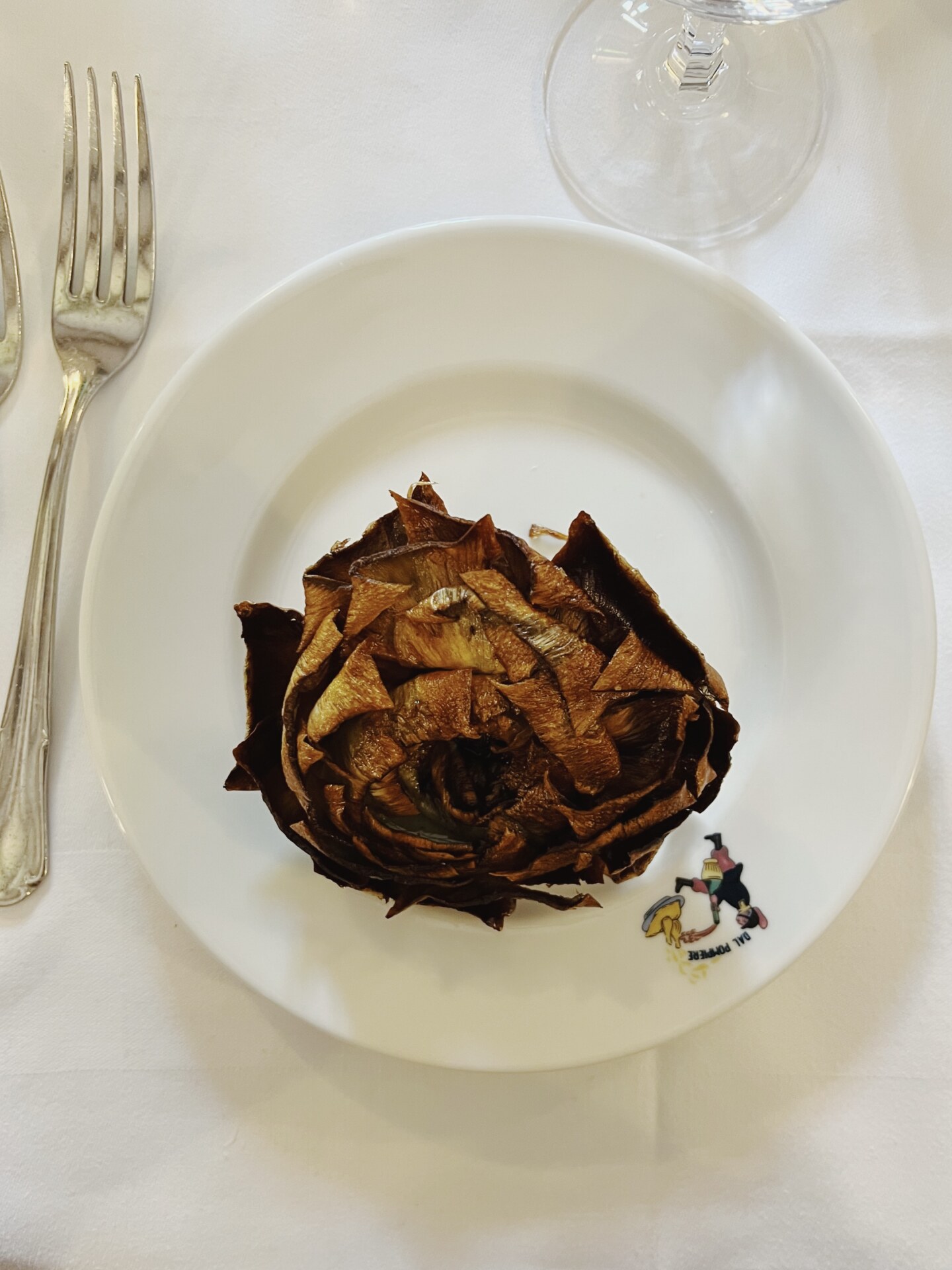
Carciofo alla giudia from Al Pompiere
Today, 13,500 members of the Jewish community live in Rome, and most have left the Jewish Quarter to live elsewhere. Yael explains that while the ghetto was once allowed only one synagogue, Rome now has 18 scattered across the city. Despite this, the area remains tied to its history, housing a Jewish school, several kosher shops and restaurants, and a non-profit institution that helps Roman Jews stay connected.
Walking through the Jewish Quarter in the evening is magic; all slick-wet cobbled stone and the terracotta glow of the Teatro di Marcello. Two men, dressed in traditional Hasidic garb, sing along to music that plays tinnily from a speaker balanced beside them. “Happy Hanukkah!” they call, first in Hebrew, then English, as we walk by. Nearby stands the Hanukkah menorah, eight candles bright against the Roman dusk.
